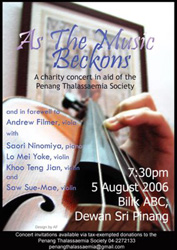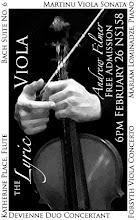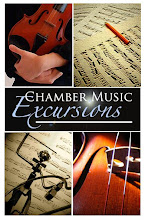
A discussion started with a question I had about why a harmonic located in the middle of a string, and why the "pressed" note in the exact same place, produces a higher pitched note. I just figured it's because a harmonic uses only a small part of a finger, whereas a pressed note covers more space, but two physics students who are also musicians have much more to add.
Bess said:
I think when playing the harmonic in the middle of the string, all the finger does is to ensure the mid-point of the string does not move, i.e. it becomes a 'node'. The wavelength of the note is exactly the string length. If we stop the string instead, we tend to aim at the same mid-point, but since our finger is of finite size, so is the area of contact, so the vibrating portion of the string becomes slightly less than half the string length, and the wavelength slightly shorter than full string length.
Teng Jian said:
What I figured was that you press down, stretching the string and thus increasing the tension.
I wouldn't be surprised if people have done the harmonic/stopped note Fourier analyses. I'm guessing that the harmonics are more pure - closer to simple sine waves - than the stopped ones are, since you're reducing the available overtones to some extent (only even harmonics). Might be something to do with the fact that the actual boundaries of the strings are the wood of the violin and you don't have soft flesh to deal with. I wonder if the thickness etc of your finger touching the string on a harmonic might affect the sound, since it would limit the higher overtones. Also sometimes if I bow on the G-string in a certain way I get harmonics without touching, I wonder how much those differ from the artificial harmonics. You wouldn't get the odd harmonics, for example. Come to think of it, the sound is more like the normal sound if I get it without touching.
Bess replied:
I have to agree that the increase of tension should also play a part, only to enhance the increase in frequency cos velocity of string wave is proportional to sqrt of tension for the same linear density, so increased tension implies increased velocity, which is the product of frequency and wavelength. If wavelength is reduced while velocity is increased, frequency should increase more.
It's true that flesh dampens some of the higher harmonics, but this should take place in both harmonics and pressed note, the only difference I could think of is that for pressed note, the finger functions as a boundary to reflect wave while for harmonics the finger sustains a node, which is a point of transmission -- I'm not sure about the implication in the frequency of wave produced though... I also had experience with getting harmonics while bowing the open string. I think that more like a resonance driving or something like that, i.e. the driving frequency in the bow some how matches the natural frequency of the harmonics. Another plausible explanation was driving force was not enough to set the entire string to vibrate in the fundamental mode, but that's more like a physicist/musician intuition and I can't really justify it.
Teng Jian’s reply:
As Bess says, the finger will be a node in the centre of the string, making it impossible to produce harmonics with an antinode there (including the fundamental/1st harmonic). So you only get the even ones.






No comments:
Post a Comment